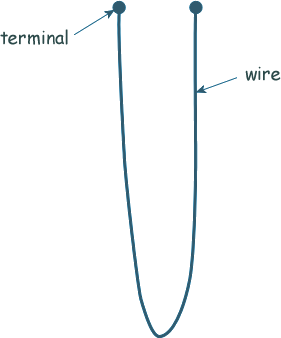Resistivity Question Q6. A wire probe is used to measure the rate of corrosion in a pipe carrying a corrosive liquid. The probe is made from the same metal as the pipe so the rate of corrosion of the wire in the probe is the same as in the pipe. The diagram below shows the probe.
(a) The wire in an unused probe has a resistance of 0.070 Ω and a length of 0.50 m. Given that the resistivity of metal in the wire is 9.7 × 10–8 Ω m, calculate the diameter of the wire. [3 marks] (b) In order to measure the resistance of a used working probe, it is connected in the circuit shown below.
When R3 is adjusted to a particular value the current in the cell is 0.66 A.
[1 mark]
[1 mark]
[3 marks]
[2 marks]
[2 marks] (Total 12 marks) |
Follow me...
|







